The Road Ahead
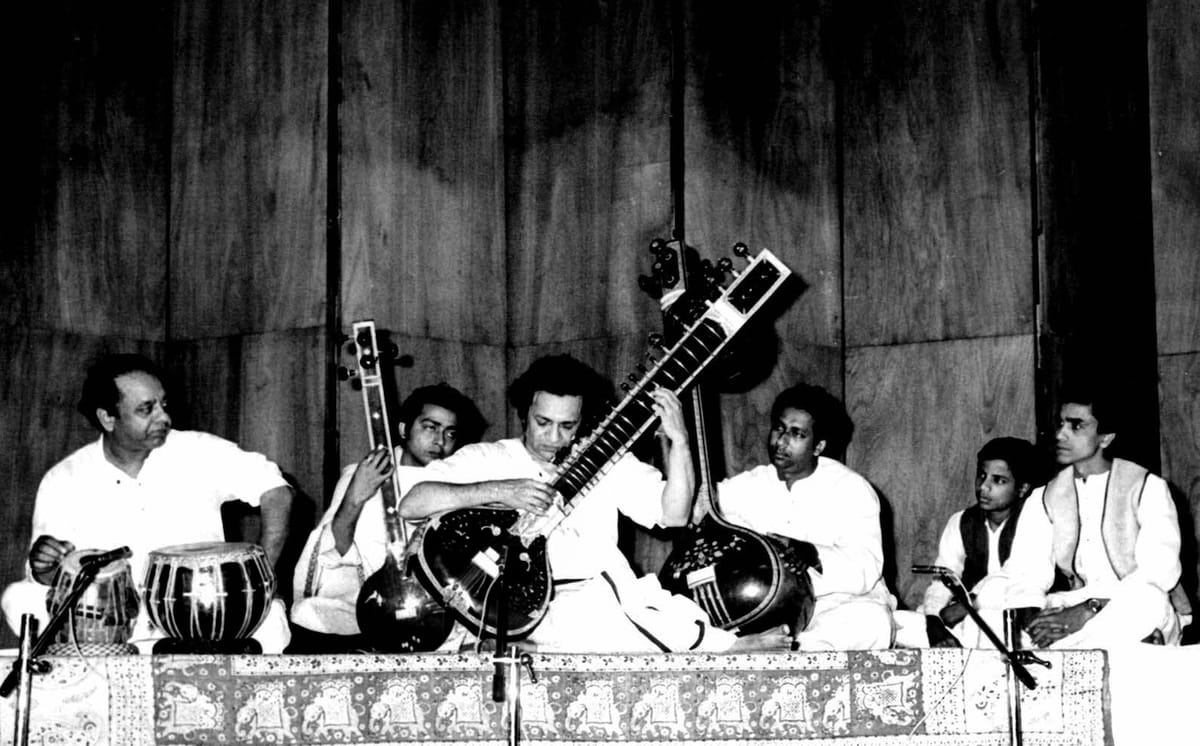
Dr. Jamshed Bhabha’s keen desire to give India a top-notch cultural complex has resulted in a mighty oak that has supported countless artistes under its canopy. Initiatives undertaken at the NCPA in the recent years and the vision for its future only strengthen the organisation’s raison d’être. By Reshma O. Pathare
It is, by now, well-known that the NCPA was started in humble premises on Bhulabhai Desai road. The set-up there consisted of a 100-seater auditorium, a recording studio, a library, and practice/workshop rooms in Akash Ganga building. The auditorium had been primarily erected for the NCPA’s archival project ahead and was thus designed to be more of a recording studio. Going against the norm of making it a small, compact vestibule, the recording studio was converted into an auditorium based on the premise that maestros performed best in front of a live audience. Thus, the task of cultural propagation had begun in earnest in a small but formidable way.
Meanwhile, Dr. Bhabha was trying to fulfil his dream of building a permanent cultural complex. Then a senior Director in Tata Group, Dr. Bhabha pointed out to the trustees at Tata Trusts that India’s heritage needed generous resources to be preserved, and that we owe it to the coming generations to help them take pride in their provenance. He proposed that Tata Trusts should fund a pioneering institute for this purpose. Many of the trustees felt that the Trust’s funds were better spent for other ‘significant’ things instead of in areas of ‘peripheral’ importance like music, dance, drama and other arts. However, J. R. D. Tata, chairman of Tata Group, decided the proposal was worthwhile. Buoyed by the strong support received from Tata, and the Managing Trustee of Tata Trusts, Rustom Choksi, the proposal’s journey towards becoming a reality began with the launch of the search for a suitable plot of land.
The people who matter
To make the NCPA an exceptional institution, visionaries and experts from various fields would be necessary. Dr. Bhabha thus brought on board a constellation of accomplished masters from around the world, such as Yehudi Menuhin, Satyajit Ray, Ravi Shankar, Mrinalini Sarabhai, Jean-Louis Barrault, Igor Moiseyev, Shigeo Kishibe, M. S. Subbulakshmi, Vilayat Khan, Karl Böhm, among others. It was the expertise of these luminaries that made the NCPA an exceptional centre – a tradition that continues till date. Headed by Chairman Mr. Khushroo N Suntook, the NCPA thrives because of the people who support it – the Chief Secretary of Maharashtra, Ajoy Mehta, Principal Chief Secretary to Maharashtra Chief Minister, Bhushan Gagrani, trustees Brinda Abhay Khatau, Farrokh Kaikhushru Kavarana, Sir Dinshaw Maneckjee Petit (Bart), Nirmal Pratap Bhogilal, Shirin K Bharucha, Zakir Hussain and Trustee of Tata Trusts, Vijay Singh – as its council members.
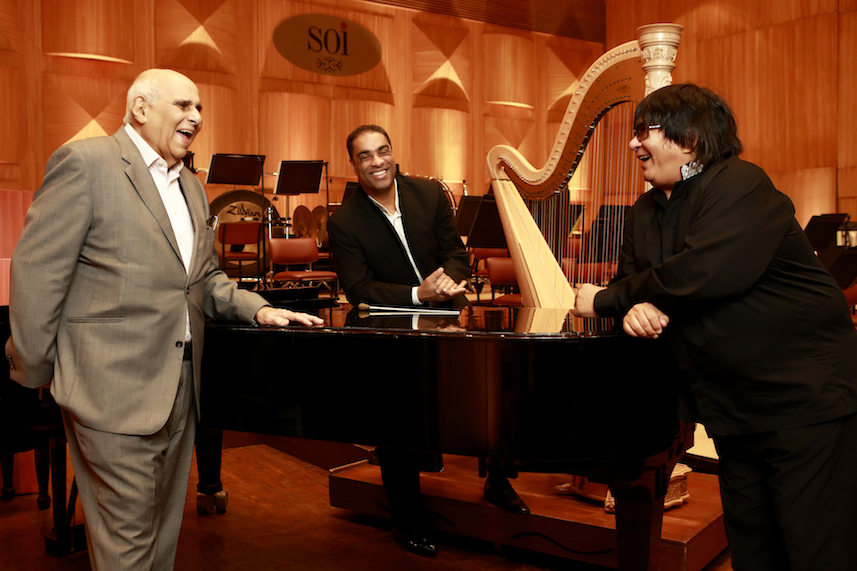
On Dr. Bhabha’s passing in 2007, when the baton was handed over to Mr. Suntook, an equally dynamic and committed visionary, establishing the five genres of Indian Music, Western Classical Music, Dance, International Music and Theatre so each department could flourish under the able leadership of experts in the respective fields, was among the first initiatives he undertook.
Mr. Suntook also worked through financial constraints to bring his management expertise to the running of the NCPA. He consulted IMG to recommend global practices that could be adapted by the NCPA. IMG studied four international cultural institutions – the Barbican Centre (U.K.), the Kennedy Center (U.S.A), the Victorian Arts Centre (now known as Arts Centre Melbourne) and the Watermans Arts Centre (U.K.) – and then submitted a comprehensive report of the changes the NCPA could make to programming, finance and administration, technical operations, sales and marketing, and organisational structure. Thanks to Dr. Bhabha’s generous bequest – he willed his entire estate to the upkeep and growth of the NCPA – Mr. Suntook was able to introduce the recommended technological upgradation and systems to bring the NCPA on a par with global standards.
A remarkable dream comes true
Another passion that Mr. Suntook’s shared with his mentor Dr. Bhabha is for Western classical music. It is befitting then, that under his guidance, the country would see stalwarts perform in Mumbai. When Mr. Suntook, with his friend, Ms. Khatau happened to witness violin virtuoso Marat Bisengaliev perform in London in 2003, a friendship was born that led to the possibility of creating India’s first Western classical orchestra, a project that would require considerable financial support and the right people on the team. “When you have an all-consuming dream,” Mr. Suntook has said, “and suddenly a fortuitous set of circumstances present themselves to dare you to take the plunge, only the faint of heart would shy away.”
Employing his perseverance to the task, he convinced Bisengaliev to launch the Symphony Orchestra of India (SOI) and take over as Music Director. Bisengaliev agreed on the condition that Indian musicians on the orchestra would have to live up to his high expectations. After managing to find eight such musicians, Bisengaliev, along with Zane Dalal, then Resident Conductor, now Associate Music Director, ran the first ‘UN’ orchestra, comprising performers from Kazakhstan, the U.K., and other parts of Europe. Buoyed by the success of the first SOI concert, Mr. Suntook and Bisengaliev started working towards bringing in world-class conductors and curating pieces that would strike a chord with Indian sensibilities.
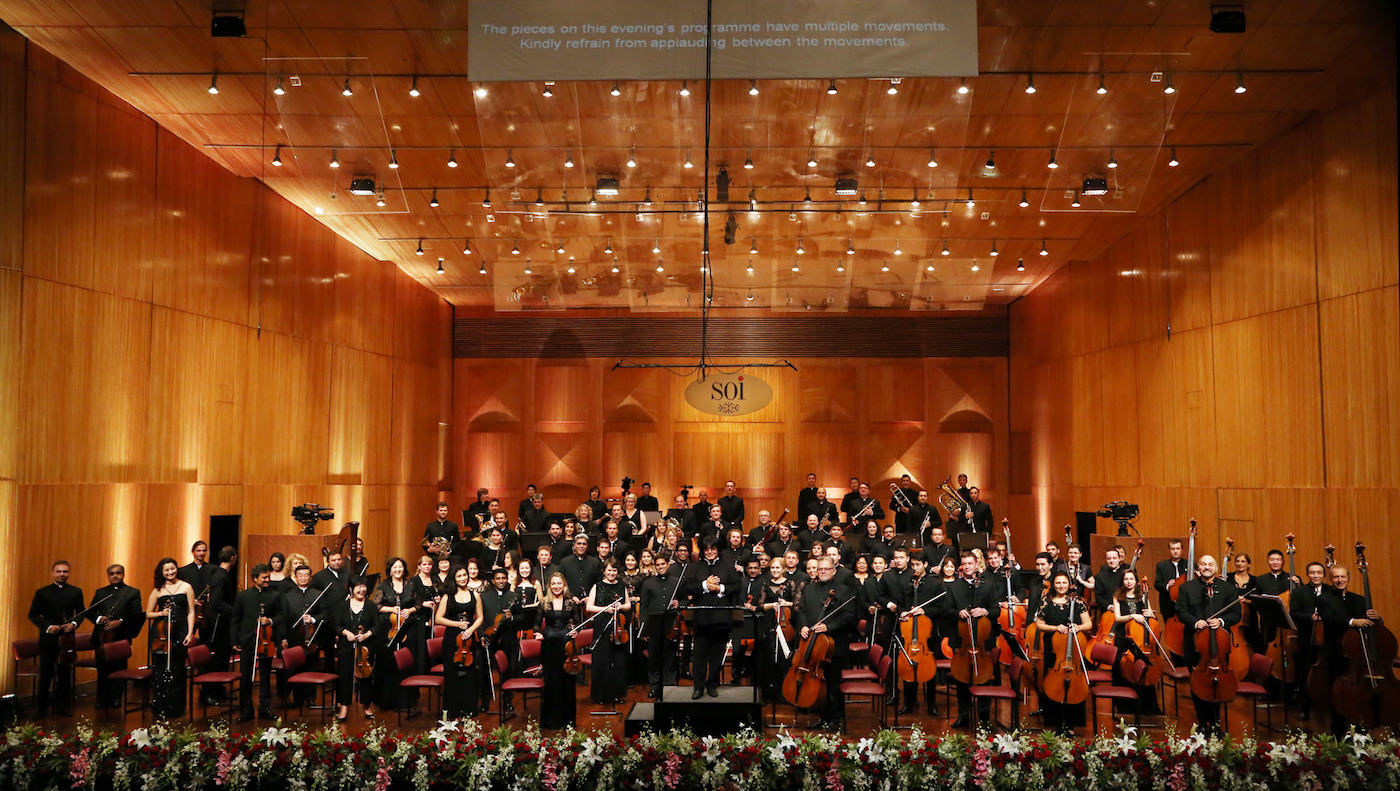
In accordance with this brief, the SOI has played a variety of pieces ranging from Beethoven’s Ninth Symphony to Mozart’s 41st (Jupiter). It has staged operas like Tosca, hosted soloists such as Barry Douglas and Simon O’Neill, and even staged the specially commissioned world premiere of Zakir Hussain’s Peshkar, a concerto for tabla and orchestra. The formation of the SOI has also paved the way for a cherished bond with the royal family of Mysore. In July 2019, the SOI had the honour of performing in Bengaluru and Mysore on the birth centenary celebrations of HRH Jayachamarajendra Wadiyar, the last Maharaja of Mysore and a great patron of Western classical music. Recently, the NCPA hosted members of the royal family who graced the golden jubilee celebrations of the organisation.
Upgrades, digital and otherwise
In spite of Dr. Bhabha’s bequest to the NCPA, the road to accessing the funds was a difficult one. After several legal hurdles over eight years, it was only in 2015 that the NCPA could start utilising the funds for the upgradation and beautification of the complex. Among the many changes carried out, an important one was the aesthetic refurbishment to create an external space as seamless and creative as the iconic theatres within, so that they could be used for outdoor, open-air activities. This brief led to the transformation of the garden spaces into the Open Air Plaza (a long zigzagging granite pathway that seems to lead into the horizon, interspersed with large swathes of bermuda grass and flower beds), Secret Garden (tucked away just outside the Tata Theatre and created around the old coconut and barringtonia trees), Sunken Garden and Experimental Garden, all equipped to consume minimum water and require minimal maintenance. With a concentrated focus on sustainability, solar panels were installed on the terraces of the NCPA in 2017, making it one of the largest rooftop projects in Mumbai.
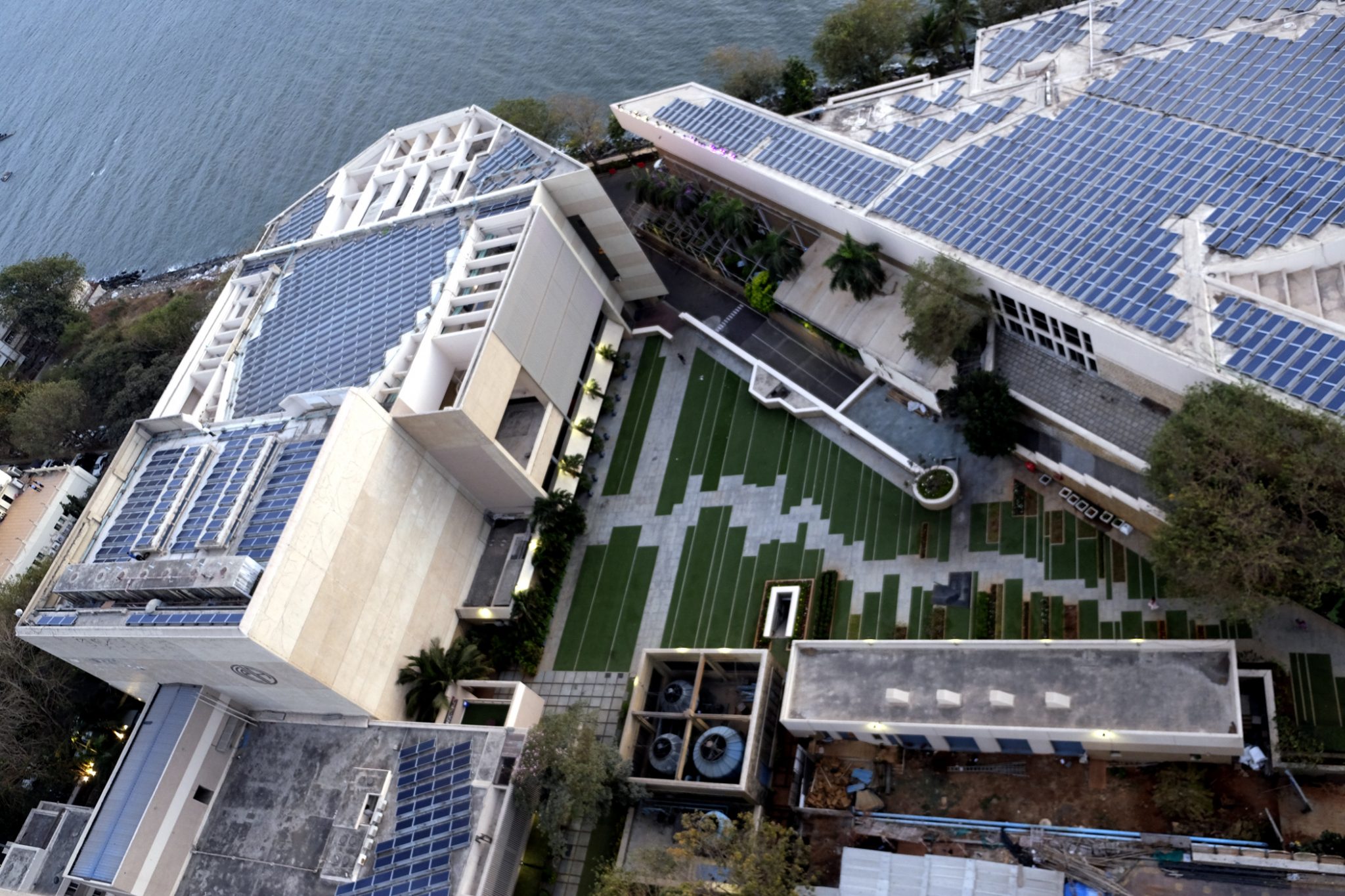
For an organisation where unwavering attention had been paid to acoustics, lighting and other technical details since its founding, it was now time for an overhaul to embrace the latest in technology. Nayan Kale, General Manager – Technical was given the mammoth task of technical upgrade of the complex – a job much easier said than done because it entailed working around the NCPA’s hugely packed calendar. Nevertheless, Mr. Kale and his team worked relentlessly to create a central machine room to provide air-conditioning to the Jamshed Bhabha Theatre, Experimental Theatre and the office areas. New rigging systems were installed along with fresh carpeting, new lighting, cables and control systems. To further enhance the quality of the performances, the theatres were endowed with Meyer sound systems brought down from the US, lighting arrangements and a special projector.
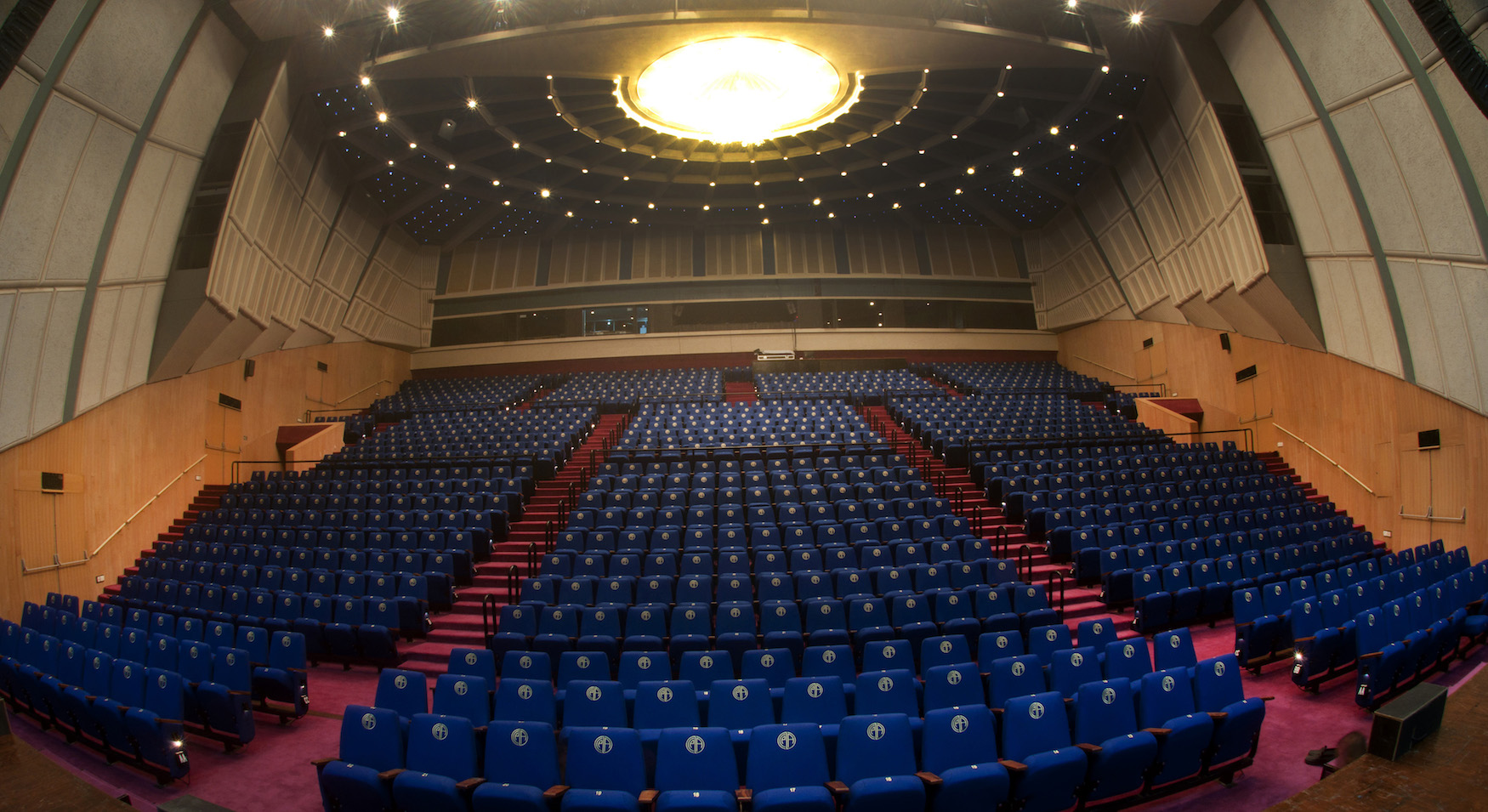
Another significant project was the digitisation of the audio and video recordings from physical tapes onto hard disks, CDs and DVDs. In spite of the massive scale of effort and costs required, the change was done understanding the advantages that digitisation brings – requirement of less storage space, easy retrieval and maximum protection from weather fluctuations. Digitisation has helped preserve the NCPA’s priceless archival collection, as well as the Stuart-Liff collection, comprising 11,000 LPs and 6,000 books, gifted to Mr. Suntook by Vivian Liff, a friend of the NCPA who was secure in the knowledge that the collection would be treasured with utmost care.
An unforgettable celebration
Over the last 50 years, the NCPA has remained steadfast in its commitment to run its five theatres with carefully curated programming and high-quality content that reaches the audience through well-priced tickets. This commitment and passion for the performing arts recently culminated in the NCPA ADD ART Festival, a multi-genre festival where outdoor performances were staged alongside curated events in indoor venues. A festive atmosphere, coupled with great food and beverages – all the while adhering to NCPA’s commitment to green ideals with no single-use plastic in the fest – turned out to be a wonderful way of bringing the community together.
From ballet to recitals by maestros Birju Maharaj, Shivkumar Sharma and Hariprasad Chaurasia; from puppet theatre to an unforgettable spectacle by the famed Manganiyars; from reading performances to comic shows, the ADD ART Festival was a thumping success, and the letters and comments that poured in only reaffirmed it. Maharani Pramoda Devi Wadiyar, on behalf of the royal family of Mysore, wrote about the concerts they enjoyed immensely, while Sri R Rajachandraraj Urs added in his congratulatory note, “Marat [Bisengaliev] and Zane Dalal & their concerts and allied performances were befitting the occasion and will linger in our memories.”
“The NCPA golden jubilee celebrations have been a visual and auditory treat” said a patron on social media. “Watching the SOI perform was like a dream come true,” said another, while a comment read, “Kudos to NCPA Mumbai for being a temple of art.”
It has, indeed, been a memorable journey. From what began as a seemingly impossible dream with modest resources has today, grown into an institution by itself. Just as Dr. Bhabha has passed down the legacy of his dreams to Mr. Suntook and his team, they have, in turn, ensured that the NCPA flourishes, and by extension, so do the performing arts. And, thankfully, this is just the beginning.
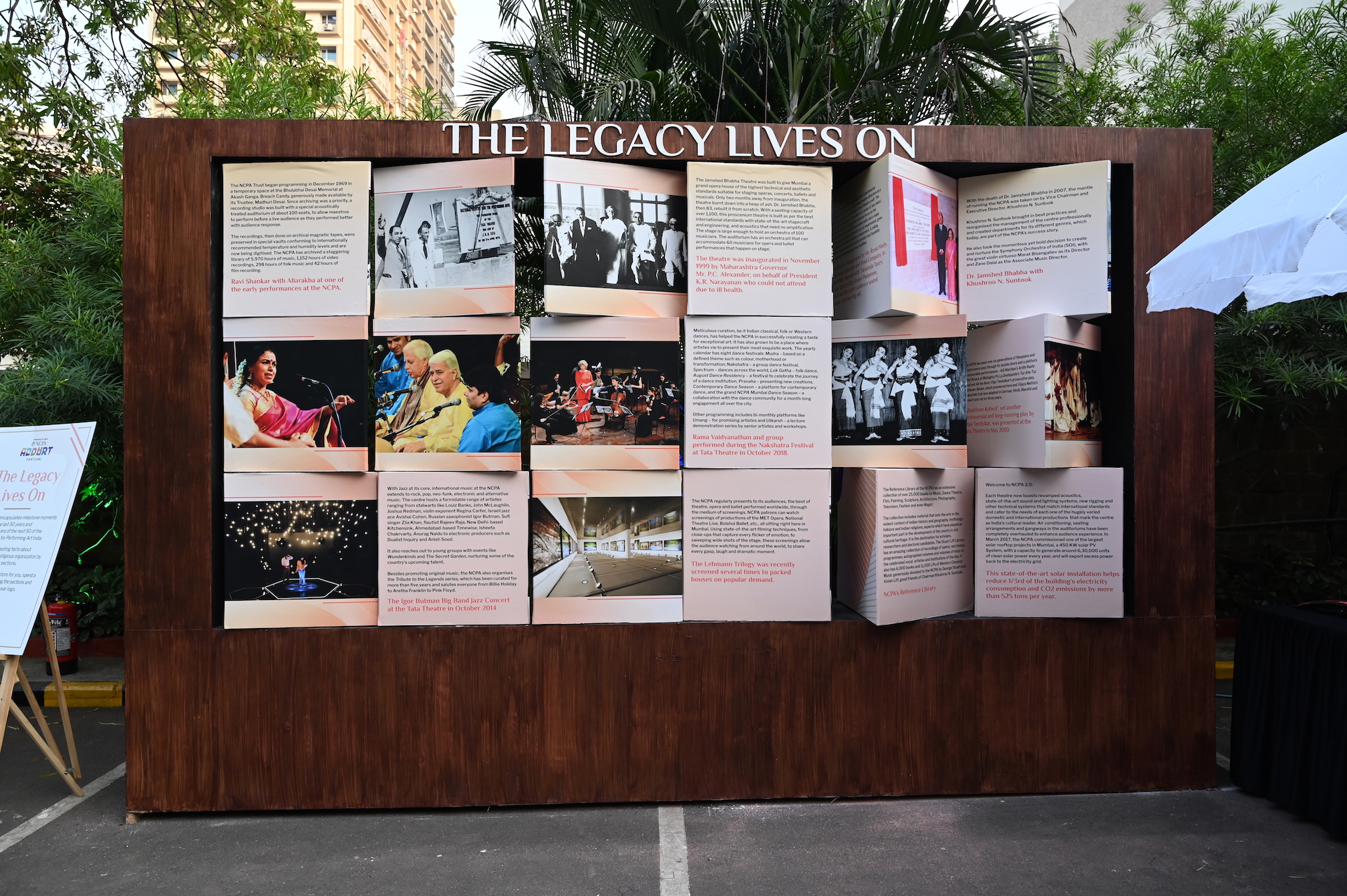
This piece was originally published by the National Centre for the Performing Arts, Mumbai, in the January 2020 issue of ON Stage – their monthly arts magazine.





